Now that the cooler weather is almost here, you’re probably wondering when you should start thinking about bringing your hummingbird feeders inside during the fall. Here in Maine, we have had a couple of nights that have gone into the 40s, but the weather has jumped back into being on the warmer side. When the temperature had gone down, our regular hummingbird visitors left for the season. The last hummingbird I saw at the feeders was this afternoon. I believe this hummingbird was stopping by the feeders and flowers for some fuel on her autumn migration journey. This brings me to the question, how can you help migrating hummingbirds? In this post, I would like to share some ways you can help migrating hummingbirds have a successful journey.
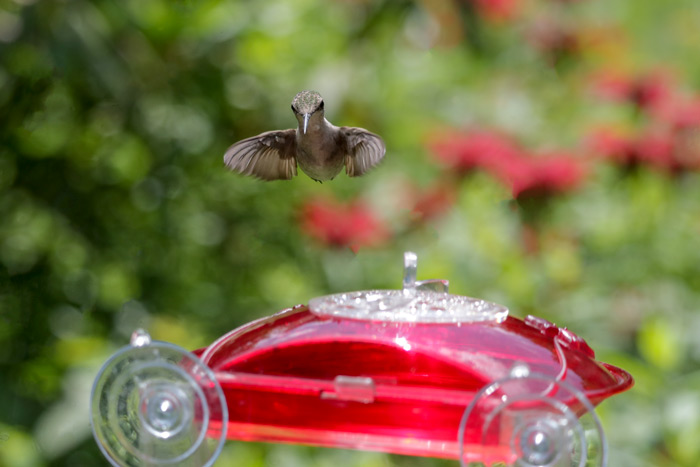
(f/5, 1/1000 sec., ISO 320)
A female ruby-throated hummingbird Archilochus colubris visiting my window feeder.
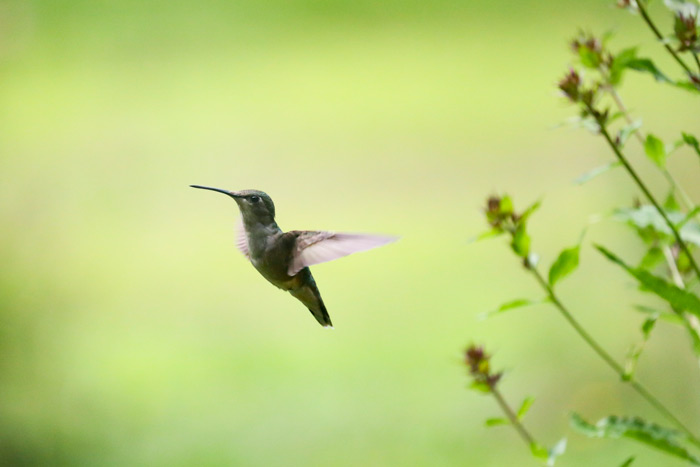
(f/5.6, 1/1600 sec., ISO 1000)
A female ruby-throated hummingbird in flight.
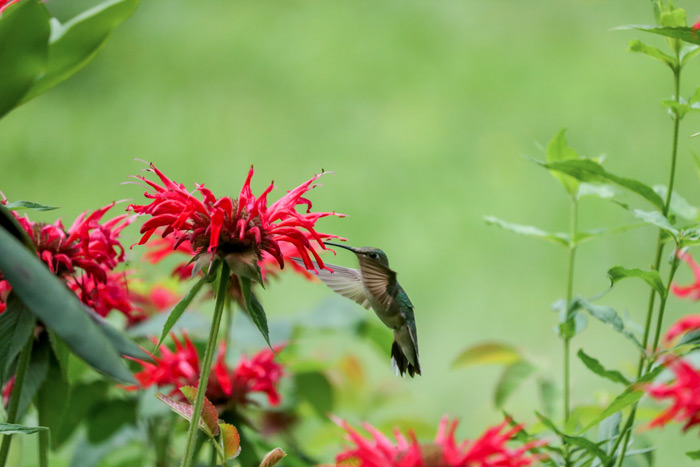
(f/5.6, 1/1600 sec., ISO 1250)
A female ruby-throated hummingbird feeding from bee balm Monarda.
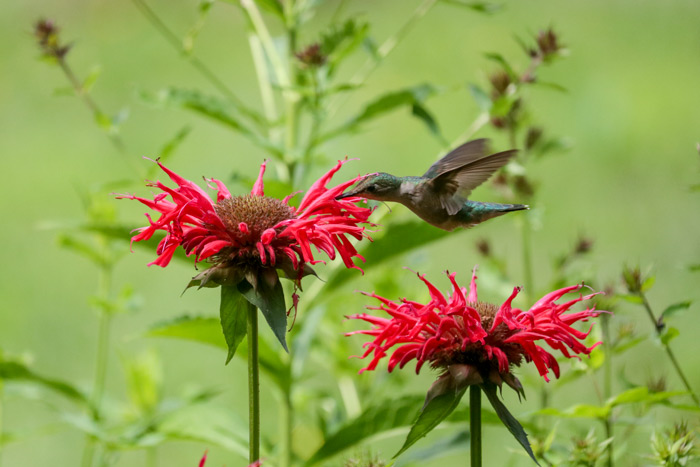
(f/6.3, 1/1600 sec., ISO 1250)
A female ruby-throated hummingbird visiting bee balm.
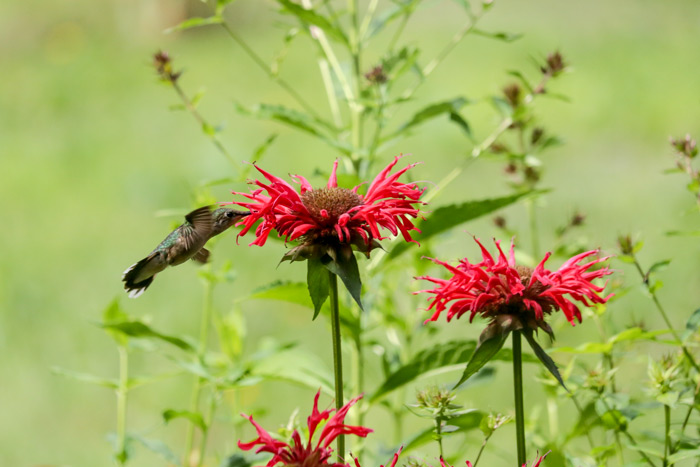
(f/5.6, 1/1600 sec., ISO 800)
A female ruby-throated hummingbird drinking nectar from bee balm.
The ruby-throated hummingbird is the only hummingbird species regularly observed in Maine. There have been records of observed rufous hummingbirds Selasphorus rufus but this is quite unusual. In regard to migration patterns, ruby-throated hummingbirds breed east of the Rocky Mountains in the United States and southern Canada and then fly south to spend the winter months in warmer climates of Mexico and Central America, as far as Panama. The ruby-throated hummingbird will arrive in Maine around the first week of May. The males arrive first to establish their feeding and breeding territories. Most hummingbirds will leave toward the end of September. The males will leave first and the females and juveniles will follow about two weeks later. This way, the males will follow their similar fall migrating behavior and establish territories for the winter.
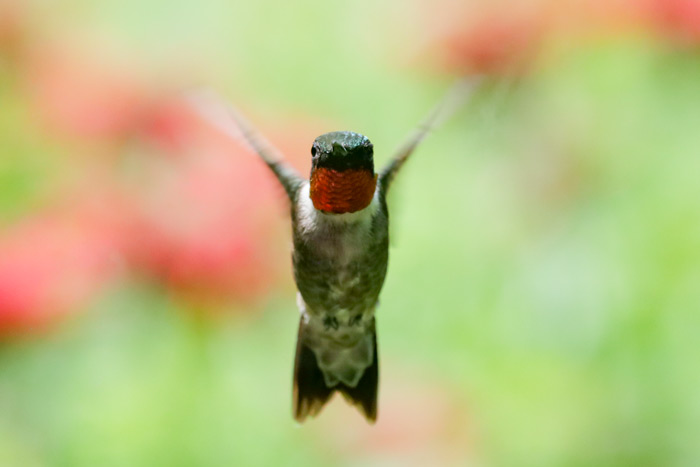
(f/5.6, 1/1000 sec., ISO 1250)
A hovering male ruby-throated hummingbird.
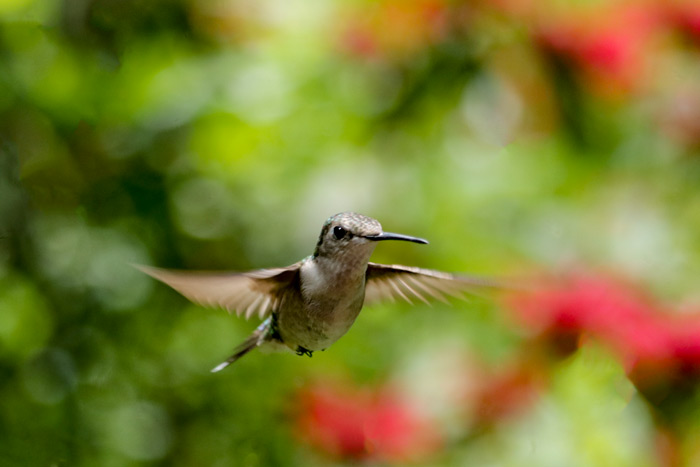
(f/4.5, 1/1000 sec., ISO 320)
A female ruby-throated hummingbird.
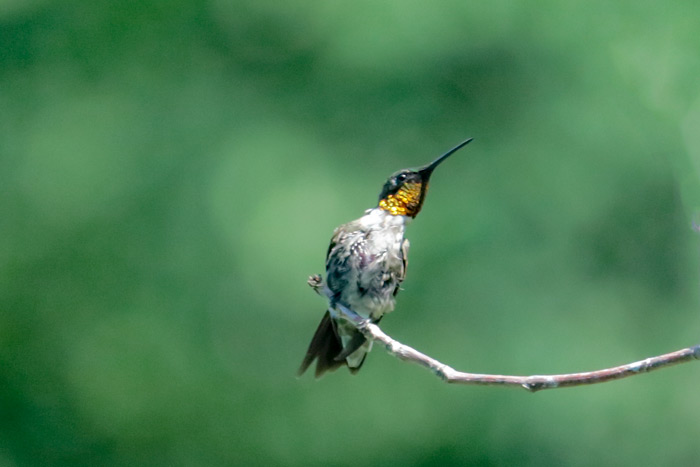
A male ruby-throated hummingbird.
As a true bird nerd, I make sure to document the arrival and departure of my hummingbirds every year. I received a birder’s life list and diary while I was taking an at-home ornithology course through Cornell and here is where I make note of all the bird species I have seen. In addition to that information, I like to take notes on the number of hummingbirds that arrive. On average, the males will arrive in the second week of May and the females will arrive a few days later. This year, the first male arrived on the 6th of May, and the females a few days later. In general, male hummingbirds are very territorial. The two males we had here for the summer seemed to get along with each other. We usually end up with about two adult males and about three adult females total for the summer. This year, we also had several juvenile hummingbirds. The adults departed quite early this year. The juvenile hummingbirds also left pretty early and I would estimate they were gone around the first week of September. This is very different from the past couple of years. The latest our usual visitors have left for the fall, has around the third week of September.
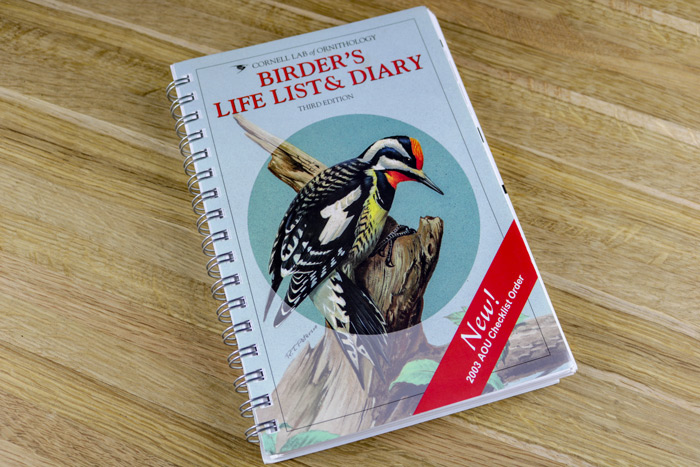
Cornell Lab of Ornithology Birder’s Life List & Diary
The last hummingbird that was here, must have been migrating from up north. This is a perfect example of why it is so important to keep your feeders out for these birds. Hummingbirds burn energy very quickly and must feed every few minutes during the day. At night, hummingbirds go into torpor, their body temperature drops and their heartbeat slows down. In the morning, they must get their body heat back up quickly and spend their day refueling their energy. In addition to their demanding daily nutritional requirements, migrating ruby-throated hummingbirds will make a grueling 3,360-mile trip. Some of these birds will fly over land, while others will island hop through the Caribbean. Many of these birds will have to rely on fat reserves that they have stored up to make a 480-mile non-stop flight across the Gulf of Mexico. It will take an average of two weeks for a hummingbird to complete its migratory journey. In case you were wondering by now, no, you will not delay the migration of your hummingbirds. This is a myth. Regardless of food ability, hummingbirds likely know when it’s time to migrate due to the changing level and angle of the sunlight.
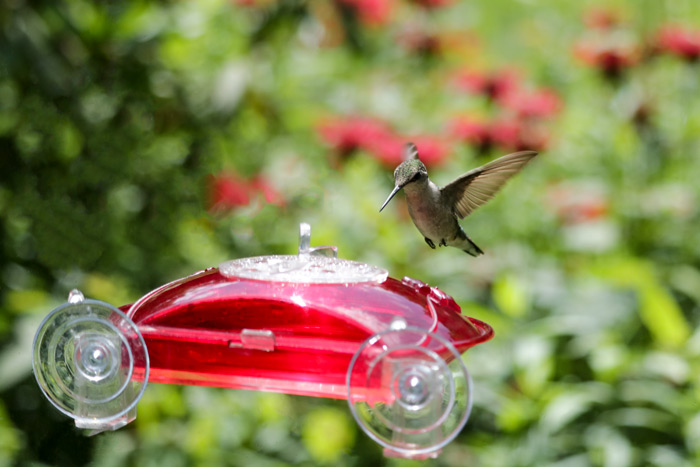
(f/4.5, 1/1000 sec., ISO 250)
A female ruby-throated hummingbird at the feeder.
Being in Maine, I believe we are almost an end destination for the ruby-throated hummingbird during spring migration. In reverse, we may see fewer hummingbirds on their way back down south at this time, but you never know. At the latest, I will keep feeders out into October. Also, to prevent nectar from freezing, you can bring your feeders in at night. The lowest we have seen at night so far here has been 45 degrees Fahrenheit, but the weather could change very quickly. In addition to keeping your feeders out, please make sure you are checking to see if the nectar is fresh and if your cleaners are kept clean. I prefer to clean my feeders with white vinegar, hot water, and a soft brush. You may be able to clean your feeders in the dishwasher, but make sure your feeders are dishwasher safe. I would recommend using the directions below for cleaning your feeders first and then putting them in the dishwasher for a nice soak and to make sure you are removing all nectar residue and mold. Here are directions for making hummingbird nectar and also how to clean your feeders:
Directions for making hummingbird nectar:
1. Mix 1 cup of sugar with 4 cups of water and bring to a boil to kill any bacteria or mold present
2. Cover and let cool and then fill your feeders
3. Extra nectar can be stored in the refrigerator
Directions for cleaning your hummingbird feeders:
1. Empty your feeder and dispose of any leftover nectar
2. Take apart your hummingbird feeder
3. Make a mild solution of soap or white vinegar and hot water and soak your feeder
4. Use a clean soft brush to get rid of any nectar residue or mold growth
5. Rinse your hummingbird feeder with cold water
6. Allow feeders to air dry before refilling
Another way you can help migrating hummingbirds is to plant flowers. Flowers provide a natural food source and late-blooming flowers provide ample nectar during the fall. A few species of flowers that I had success with are, bee balm Monarda, sunflowers Helianthus annuus, scarlet runner bean blooms Phaseolus coccineus, and phlox Polemoniaceae. Depending on the weather, these will remain in bloom well into October. It is also important to choose a variety of flowers that will bloom at different times so nectar is available from early spring through late summer, giving these birds a rich food source throughout the season.
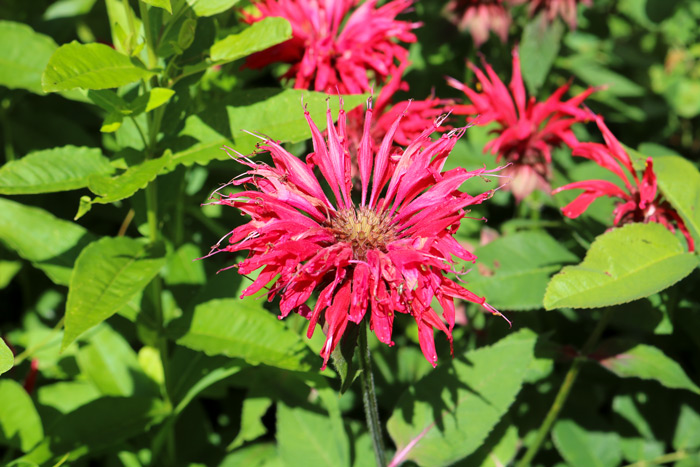
Bee balm Monarda

(f/6.3, 1/1600 sec., ISO 1250)
A female ruby-throated hummingbird feeding from bee balm.
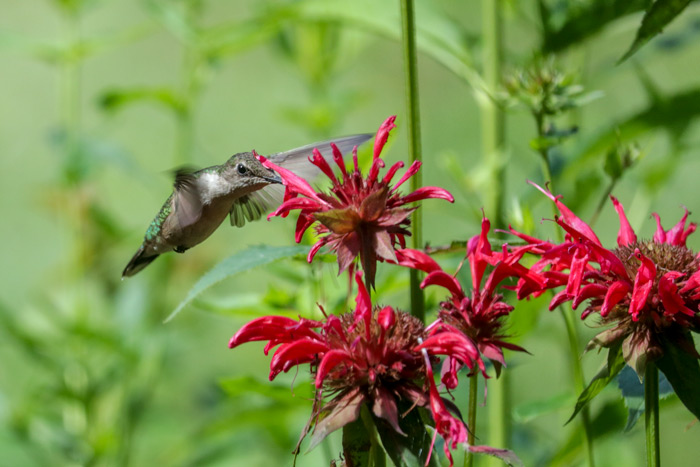
(f/5.6, 1/500 sec., ISO 640)
A female ruby-throated hummingbird hovering in front of bee balm.

Sunflowers Helianthus annuus
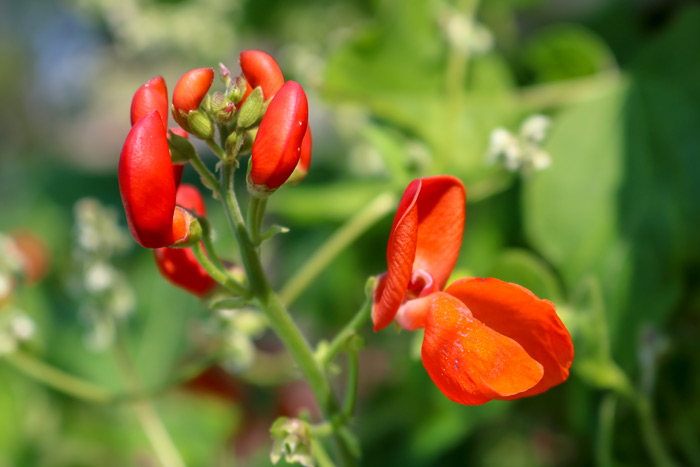
Scarlet runner bean flowers Phaseolus coccineus
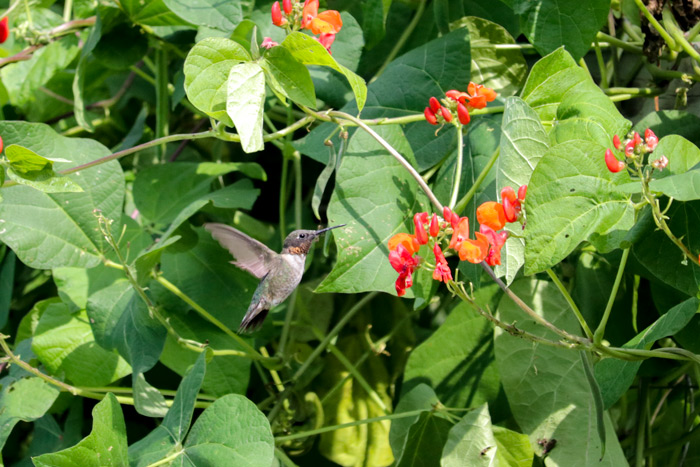
(f/5.6, 1/1250 sec., ISO 640)
A male ruby-throated hummingbird hovering in front of scarlet red runner beans flowers.
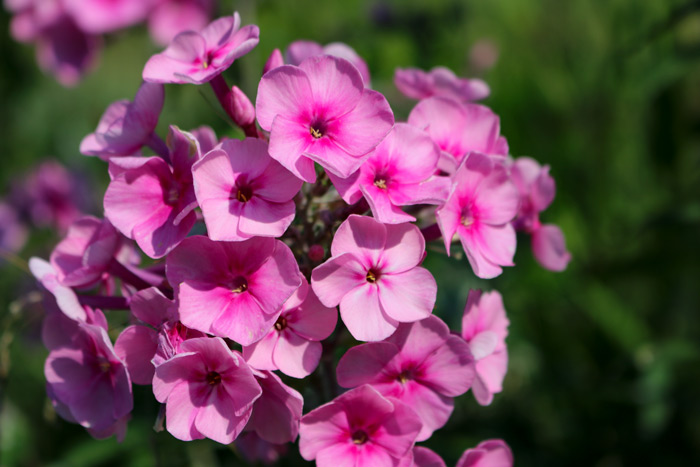
Pink phlox Polemoniaceae
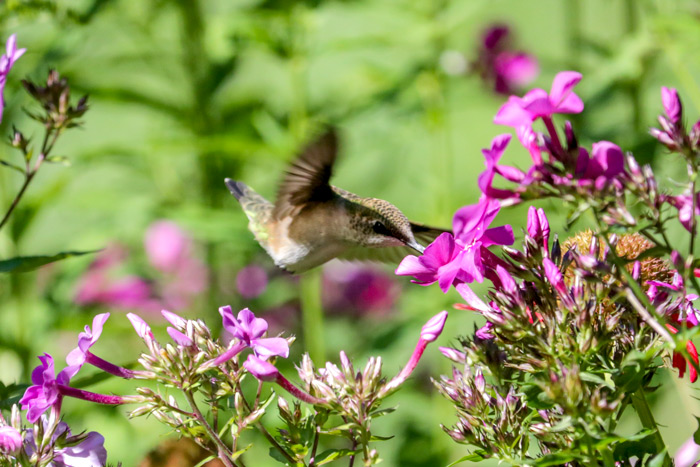
(f/6.3, 1/2000 sec., ISO 1000)
A female ruby-throated hummingbird feeding from phlox.
Ruby-throated hummingbirds can eat up to three times their weight per day in preparation for migration. So please keep your hummingbird feeders up and wait at least two weeks after seeing your last hummingbird, before bringing them in for the season. I hope you have found these tips useful and you can see how essential your role is, in ensuring hummingbirds survive their migration journey.
Leave a Reply